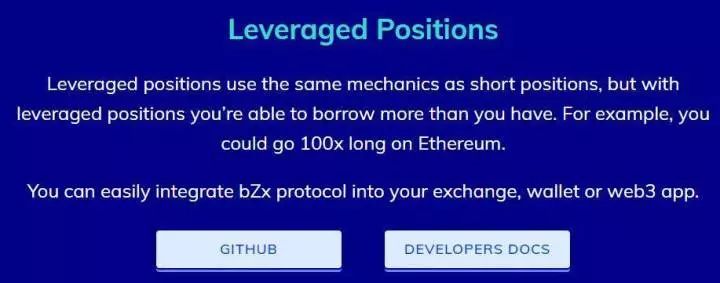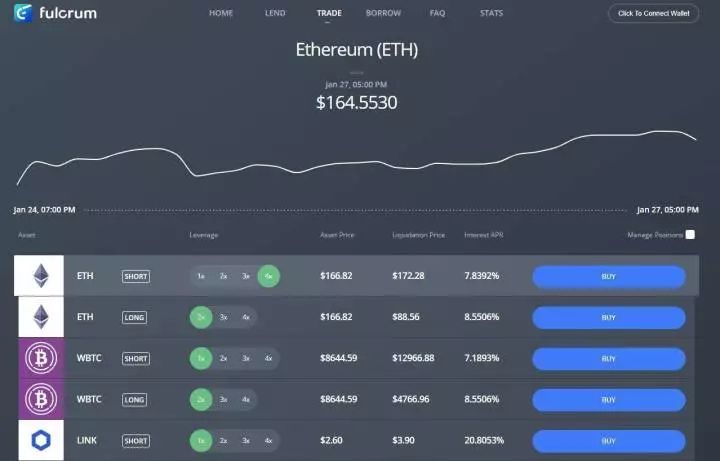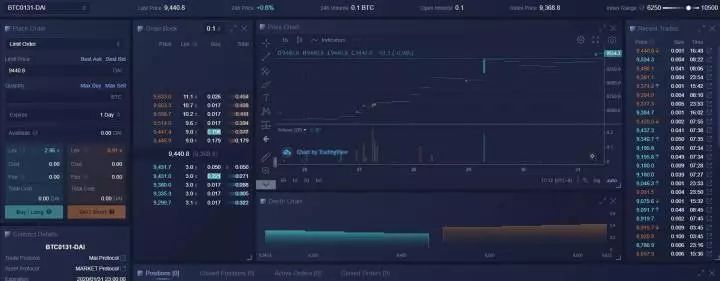Will the next DEX supporting 100x leverage really stand out?
Many people find that the high-leverage products of mainstream cryptocurrencies have become fashionable when the private equity of blockchain projects and the altcoin speculation cannot be profitable at all.
BlockBeats observes that in the past 2019, the futures contract transactions of mainstream cryptocurrencies have exploded, regardless of the actual transaction volume, number of participants, or the number of platforms that open such businesses overseas. rise. In 2020, with the introduction of options, the position of derivatives in the cryptocurrency industry will only become increasingly important.
During this process, BlockBeats found that many users were "complaining" about the centralized derivatives platform. They complained that the platform had peak transactions, disconnected network cables, and "pins". They believed that centralized derivatives The platform charged excessive transaction fees, and was even afraid that the platform would use user data as a counterparty, thereby achieving "fixed-point blasting."
If you think about it, these claims are not without reason. At the same time, the centralized trading platform also faces pressure from supervision, and everyone's research interest in DEX and DeFi is rising. Why can't a cryptocurrency industry holding a decentralized banner hold a smooth and easy-to-use decentralized derivatives trading platform?
- The latest progress of global central bank digital currency | Six countries hold a group to warm up, the basic design of digital dollar framework is completed
- Analysis | Does institutional investor entry really increase the price of Bitcoin?
- Why aren't institutional investors coming in? What are they worrying about?
On the other hand, Twitter user and DeFi enthusiast Arthur (@ Arthur_0x) made the point that the next DEX supporting 100x leverage will stand out.
So, is there a logic to this point? Or will this become a reality in the future? This article will start with a leveraged DEX product for a brief introduction and analysis.
Tracking Lever DEX
"DEX can still be leveraged? I thought that DEX can only do currency transactions." Retailer Xiao Wang asked the reporter in an interview. In fact, this is not an example. BlockBeats found that many people do not know that there are already DEXs that can use leverage.
We also found in the interview that even if the possibility of leveraged trading appears in DeFi and Dex, most retail investors will eventually carry out leveraged and contract trading in the "centralized platform" they complain about.
Leveraged DEX or leveraged tools on the blockchain are actually with us. Interestingly, the well-known MakerDAO can be regarded as a leverage tool. Users can pledge ETH in exchange for DAI to buy more ETH in a DEX market such as Uniswap. If unfortunately the price of ETH drops, users will have to close ETH speculative positions and repay debt positions, otherwise the system will be enforced by reaching the liquidation line.
However, we all know that due to the limitation of the mortgage rate, MakerDAO cannot make transactions with ultra-high leverage. Even if the user pledges DAI and then rolls the mortgage, it is difficult to achieve a centralized derivatives trading experience. On the one hand, it is subject to the complex clearing mechanism, and on the other hand, it is subject to the speed and accuracy of the quote machine.
Of course, DeFi and DEX projects have been continuously exploring on the track of decentralized derivatives trading.
The bZx protocol and Fulcrum are one example. The bZx protocol is an open financial protocol based on Ethereum, and Fulcrum is a DeFi application built on the bZx protocol, which reconciles users' borrowing and derivative transaction needs in the digital asset world.

In the token economic ecology of the bZx protocol, it is divided into three types: iToken, pToken, and Government Token (BZRX). iToken is a token used to accumulate interest. It represents the share in the loan pool. As the borrower pays interest to it, the share in the loan pool will continue to increase.
iToken can be traded, used as collateral, or assembled into structured products by developers. pToken is a token used to increase leverage. It represents a long or short position in a certain multiple of an underlying asset. For example, if a user holds pLETH2x (ETH double long token), it can play 2 times leverage on a centralized platform. The effect of multiple ETH. BZRX is a governance token that collects transaction fees for relay nodes. It is a bit like a platform currency with a "equity" attribute in a centralized trading platform.
In Fulcrum, users can directly purchase the corresponding leverage multiples of an underlying asset to play a role in enlarging the investment principal. The official claims that Fulcrum can do transactions without authorization, fees, and registered accounts (requires an Ethereum wallet).
However, BlockBeats found that although it is more convenient to operate, Fulcrum currently only supports ETH, WBTC (which can be understood as the mapping asset of BTC on the Ethereum chain), LINK, ZRX, and KNC, which is based on ETH and the main ERC20 system. Lord, it has certain limitations. At the same time, Fulcrum does not support user-defined high leverage, and the 100-fold leverage DEX mentioned in the title has not yet been implemented.

The experience of such products when used is similar to the "leverage token" in a centralized trading platform, except that the "leverage token" usually operates semi-centrally by actively managing funds, and its asset purchase process will not be completely in On the chain, Fulcrum's digital asset leverage token is more decentralized, and there is no value wear and tear caused by the position adjustment mechanism.
Rather than making the price fluctuation of digital assets directly into a leveraged token, dYdX's solution is easier to understand, and the trading interface is also biased towards a centralized derivatives platform. After connecting to the Ethereum wallet, users can deposit ETH margin and carry out leveraged transactions. The leverage ratio varies from 1 to 5 times.
Similarly, trading pairs on dYdX are also relatively scarce. Currently, there are only three types: ETH / DAI, ETH / USDC, and DAI / USDC. Interestingly, if you have long-established DAI / USDC short orders (or reverse positions), you can hedge the risk of holding the DAI (or USDC) price off-anchor. This idea is very interesting to integrate in DEX or DeFi.
Back to the topic, although the trading steps of dYdX are simple, the liquidity is still insufficient. A few hundred dollars of trading volume can cause thousands of slippages, and the market slippage of tens of thousands of dollars is 2% to 3%. The trading depth of hundreds of BTC in BitMEX is incomparable.

Of course, there are many DEX derivatives on the market that are similar in logic to Fulcrum and dYdX products, such as Nuo, DDEX, and so on. Here are no examples.
Another special DEX derivative is Mcdex. It combines decentralized leveraged tokens and traditional derivatives trading interfaces to hide things belonging to the technical level, allowing users to intuitively go long or short, without the need for ordinary investors to consider the casting and redemption of leveraged tokens. return. In addition, Mcdex's leverage multiple design is also relatively new. The farther away from the market price, the lower the margin rate of the pending order, the higher the leverage, which promotes the depth of trading.

However, from the BTC0131-DAI main contract in the above figure, we can clearly see that the depth of the entire trading market is still limited, and the real trading volume of the 24-hour trading market is relatively scarce, and the platform as a whole is still in its infancy.
Leverage DEX Suspect
After introducing some representative leveraged DEX in the market, BlockBeats found that no matter how the mechanism is set up, basically the following methods cannot be escaped:
Using DeFi interoperability, splicing ordinary digital asset trading and lending products into derivative leverage DEX; through excess mortgages, minting leveraged tokens that anchor specific digital asset price changes; and linking local spot exchanges.
Although complex splicing may seem clever, the systemic risk of the entire platform has skyrocketed. As long as there is an insolvency death spiral in the upstream of the asset end, the products spliced from the mid-downstream will be affected.
As a very "blockchain" solution, leveraged tokens have greatly reduced user experience.
Moreover, back to the topic, no matter which method is used, 100 times leverage cannot be achieved. The root cause lies in complex splicing, excess mortgages, and the speed and accuracy of the oracle quotation, which cannot meet the demand for such a high leverage. At present, only centralized derivatives trading platforms can meet the requirements of ultra-high leverage.
Taking a step back, even if there is a 100x leveraged DEX in the future, it will not stand out.
The reason is simple. Think about why decentralized spinach DApps have not defeated centralized casinos?
Instead of believing that a spinach DApp with a market value of only tens of thousands and millions of dollars does not leave a back door or run away, it is better to believe in a global professional casino.
The logic should be interlinked. Since it is speculation and betting, instead of believing that the complex decentralized derivative mechanism is foolproof and without black swan, users may as well believe in centralized endorsement and experience its services. The biggest problem of the current leverage DEX is not even whether it can reach 100 leverage, but how many people will actually use and trade on it after it is reached?
In short, the industry still has a long way to go, whether it is to simplify the operation threshold, optimize the experience, or let users really have the habit of "using" blockchain for transactions.
(Block Beats reminds that according to the document issued by the Banking Regulatory Commission and other five departments in August 2018 on "Precautions against Risks of Illegal Fundraising in the Name of" Virtual Currency "and" Blockchain "", please the general public to treat the block rational Chain, don't blindly believe in the promise of smallpox, establish the correct currency concept and investment concept, and effectively raise the risk awareness; you can actively report to the relevant departments for the illegal and criminal clues.)
* Block Beats reminds investors to guard against the risk of chasing high risks. The opinions mentioned in this article do not constitute any investment advice.
We will continue to update Blocking; if you have any questions or suggestions, please contact us!
Was this article helpful?
93 out of 132 found this helpful
Related articles
- ChainNode evaluation: WOOKONG Bio & Solo hardware wallet full experience
- Viewpoint | Differentiation of roles is a prerequisite for the application of the blockchain industry
- A-share rat opened 3,000 shares in the year, and Bitcoin hit a 90-day high. Buy shares or buy coins?
- DeFi week selection 丨 Ethereum's DeFi ecosystem ushers in an explosion period, but the issue of contract loopholes is still cause for concern
- Blockchain Weekly | Domestic focus on using blockchain technology to assist in epidemic prevention and control and material distribution Switzerland's first IPO on blockchain approved
- Anti-virus, how to win a distributed war?
- Monetary Authority of Singapore: We use distributed ledger technology to solve real-world problems, not technology






